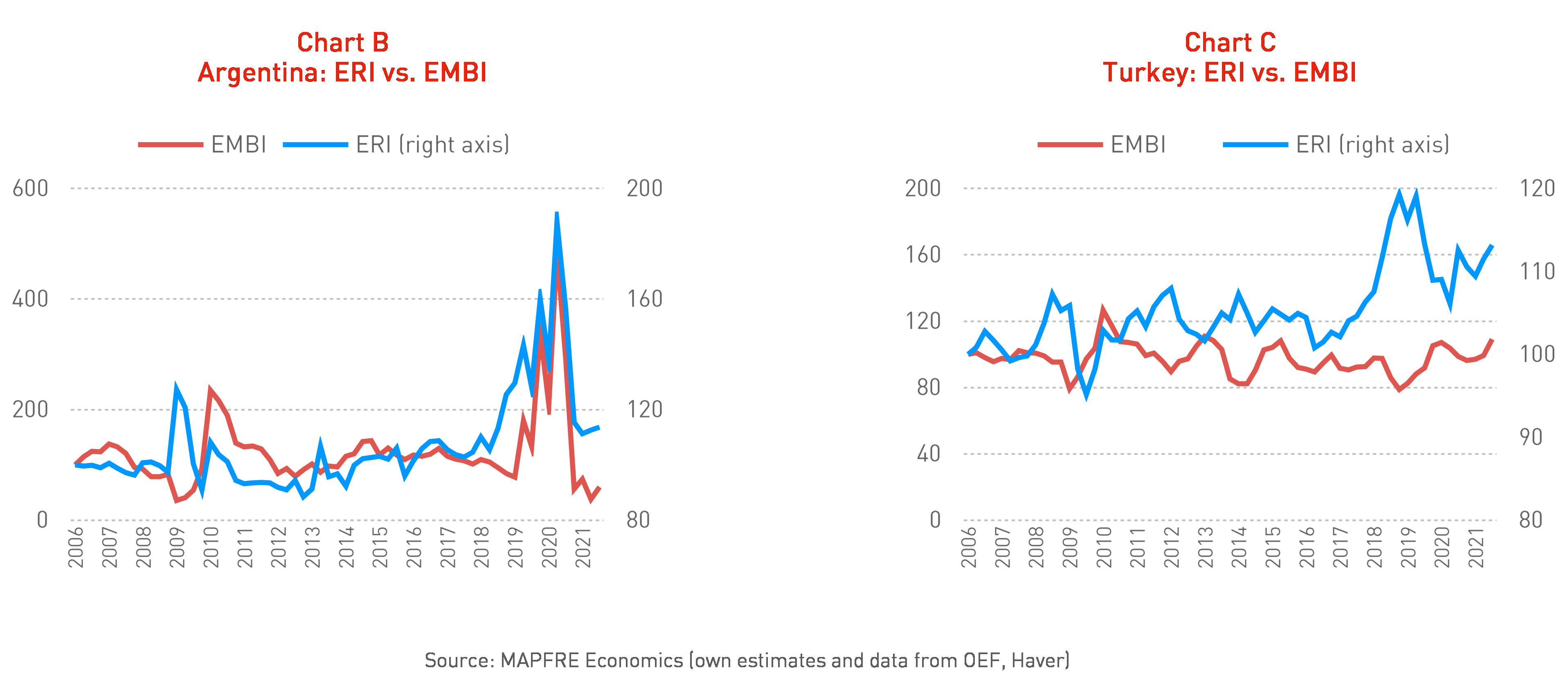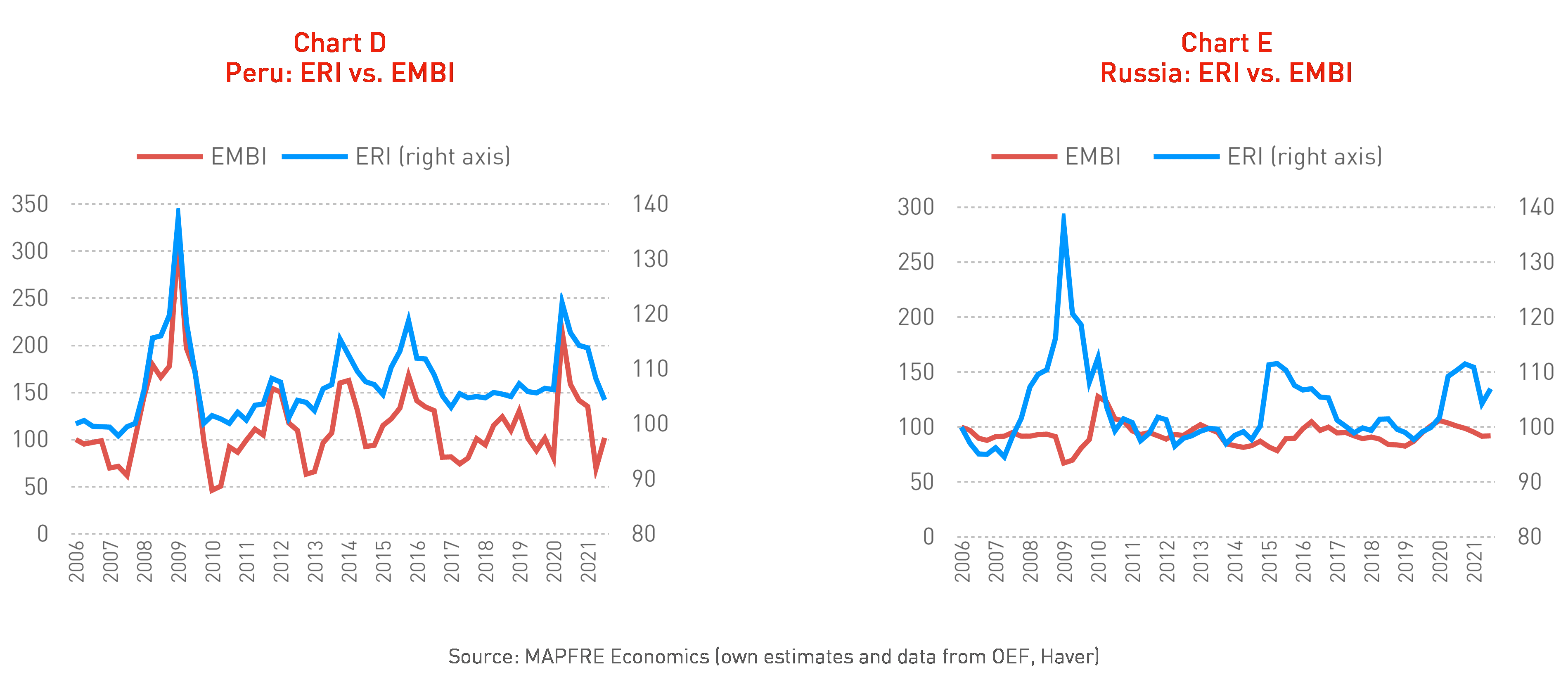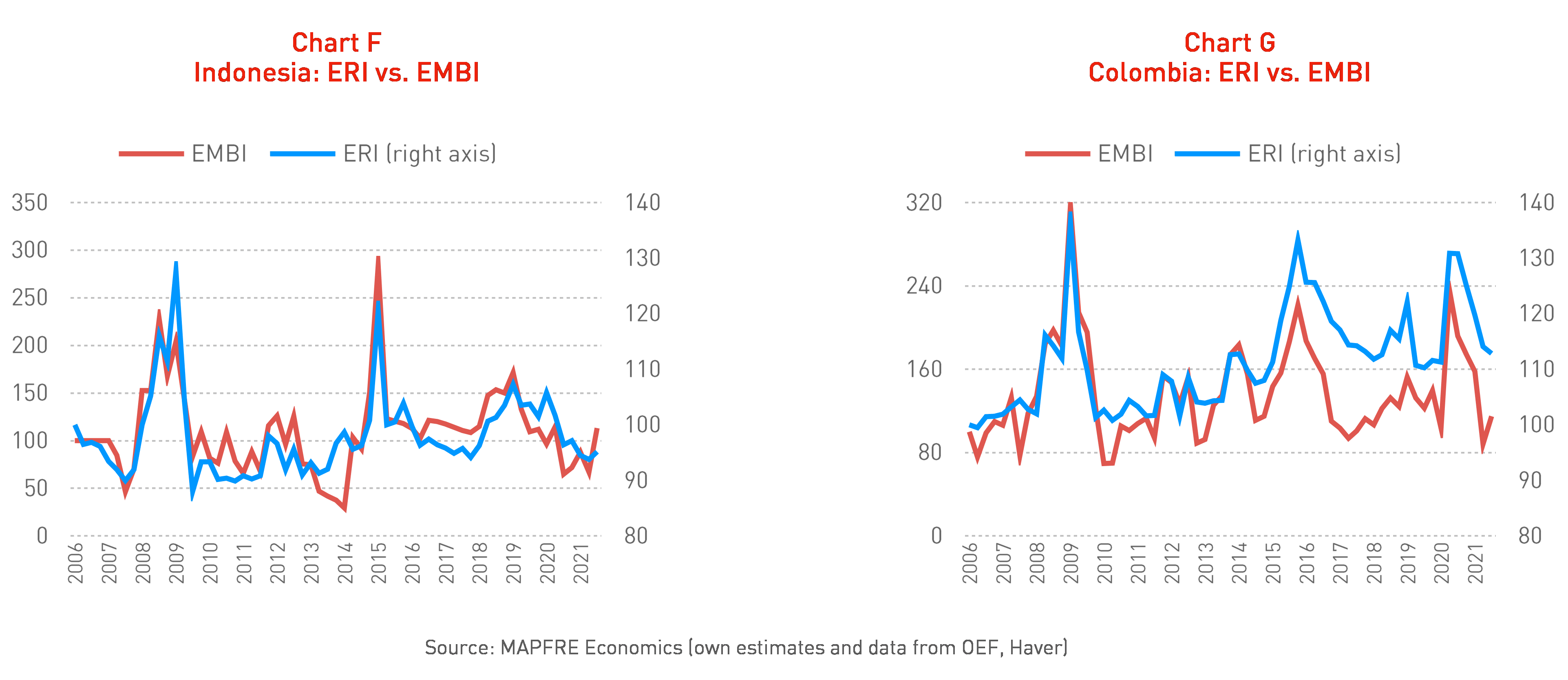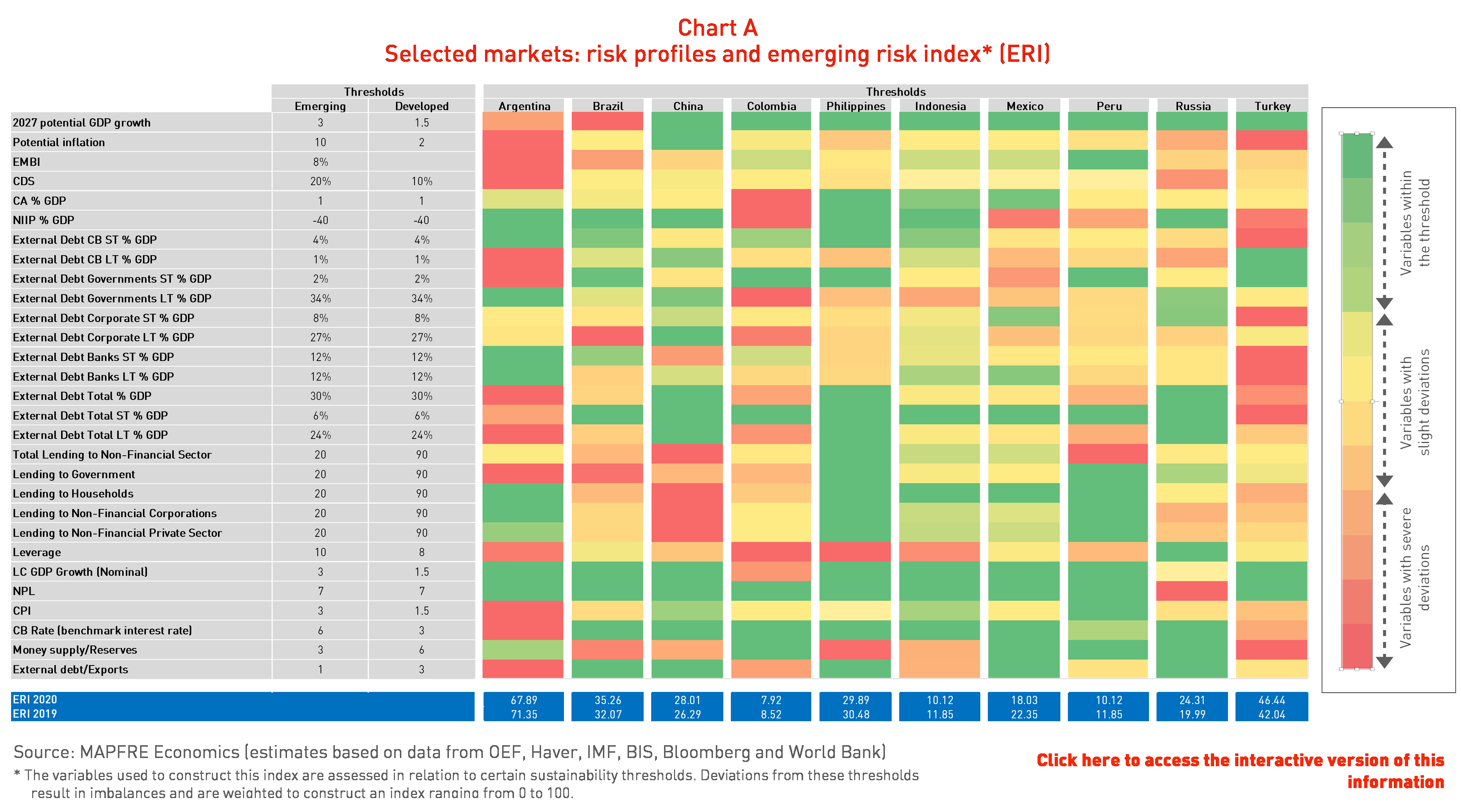Emerging vulnerability analysis: evolution of the Emerging Risk Index (ERI)
Author: MAPFRE Economics
In the first half of 2021, the global economy decelerated due to the spread of new coronavirus variants and the need to take more restrictive measures to contain them, even in the most advanced economies. In this context, the uneven progress of vaccination campaigns between developed and emerging countries throughout the first half of the year, in favor of the former, allowed some major economies to gradually reopen, providing a respite to the global economy.
Last year was strongly marked by the COVID-19 pandemic; however, the rapid fiscal and monetary adjustment in response to the shock helped to stabilize its impact. Thus, once the first epidemiological phase was over, the capacity for recovery was higher in the countries with a lower need for financing of their financial accounts and with a current account surplus stimulated by rising raw material prices. This generated a divergence between countries with less control over the pandemic and more dependence on external flows, slowing the pace of recovery of their activity levels.
In this context, the countries with a greater degree of integration into global supply chains benefited from the reactivation of these chains, as well as a slight improvement in external demand. Along these lines, pre-pandemic factors like macroeconomic strength and fiscal savings are differentiators for countries’ performance, as they determine how well different economies can cope with high levels of public spending and borrowing caused by the COVID-19 crisis. For this reason, even countries that benefited from the rise in raw material prices have risen on the Emerging Risk Index (ERI) due to their fiscal accounts lacking robustness.
Although the analysis reflected in the ERI uses data from 2020, it is very much forward-looking, as it highlights weaknesses that will affect the development of nominal stability in emerging countries throughout 2021 and 2022, and will show the differential effects of the economic disruption caused by the pandemic.
Main conclusions from the analysis
The study of the vulnerabilities of a number of selected markets through the construction of the ERI has allowed the following general conclusions to be drawn (see Charts A to G):
- In the case of Argentina, there is a slight improvement in the indicator, highlighting (i) the recovery of economic activity, (ii) the successful external debt renegotiation process, (iii) the accumulation of positive results in the current account, and (iv) a more contained fiscal dynamic. However, certain latent structural vulnerabilities remain, (i) limited access to external borrowing, (ii) local currency instability, (iii) the need for a budgetary rebalancing in line with IMF programs, and (iv) a certain trend toward current imbalances in its balance of payments. Meanwhile, in Turkey, the indicator has continued to deteriorate, with imbalances escalating in (i) the current account, (ii) high external debt, mainly in dollars, (iii) high inflation rates and (iv) the financial sector and its channeling capacity towards the non-financial private sector.

- The economies of Peru and Russia, on the other hand, show a slight deterioration on the ERI compared to the previous report, although to a lesser extent than reflected in the movement of the EMBI. In Peru, the greatest risk arises from the external debt acquired during the pandemic, the lower coverage of tax savings and the high levels of loan guarantees by the government in relatively short terms. In Russia, the main concern is the deterioration of the financial system’s average lending in terms of NPLs, although this effect is currently offset by its improved external position due to the rebound in global energy demand and oil prices, having a positive impact on its balance of payments.

- Finally, in the economies of Indonesia and Colombia, although the risks remained similar to the year before the pandemic, the situation has highlighted growing vulnerabilities in Colombia and some resilience in Indonesia, which has a slightly stronger position. The Colombian economy continued to show a large current account deficit despite the effect of higher raw material prices. In addition, due to the failure in terms of taxation and especially tax reform, the gap between the EMBI and the scoring remains wide. In the case of Indonesia, lending to the non-financial sector and high levels of external debt continued to increase throughout 2020, albeit at a moderate pace. In this context, there is an increased risk of contagion from China’s poorer performance, exposing the economy to higher risk premiums whose impact is reflected in the EMBI.






